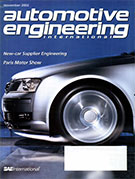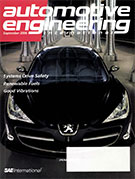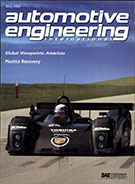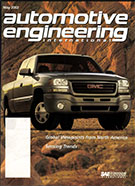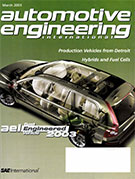Magazine

Autonomous Vehicle Engineering: November 2019
2019-11-01
Editorial Bill Visnic: Expect the unexpected The Navigator Sam Abuelsamid: Separating illusion from magic in AV deployment The Road to Automobility The era of electrified, self-driving vehicles is upon us. Engineers are key to the transformation - with much hard work still to be done. Far and Away: Remote Drivers Monitor Autonomous Vehicles Remote operators are helping autonomous shuttles and other AVs navigate through complex situations. Mapping Canada - Centimeter by Centimeter A Montreal-based company leverages artificial intelligence to take on the task of developing high-definition maps of Canada. You've Lost That Queasy Feeling… Transcontinental research aims to understand the complex nature of motion sickness to help improve the automated-vehicle experience. 3D Sonar Sees Objects Overlooked by Costlier Sensors A dream of robotic fish inspires inexpensive automated-driving sensing technology that works for the critical areas close to the vehicle.




